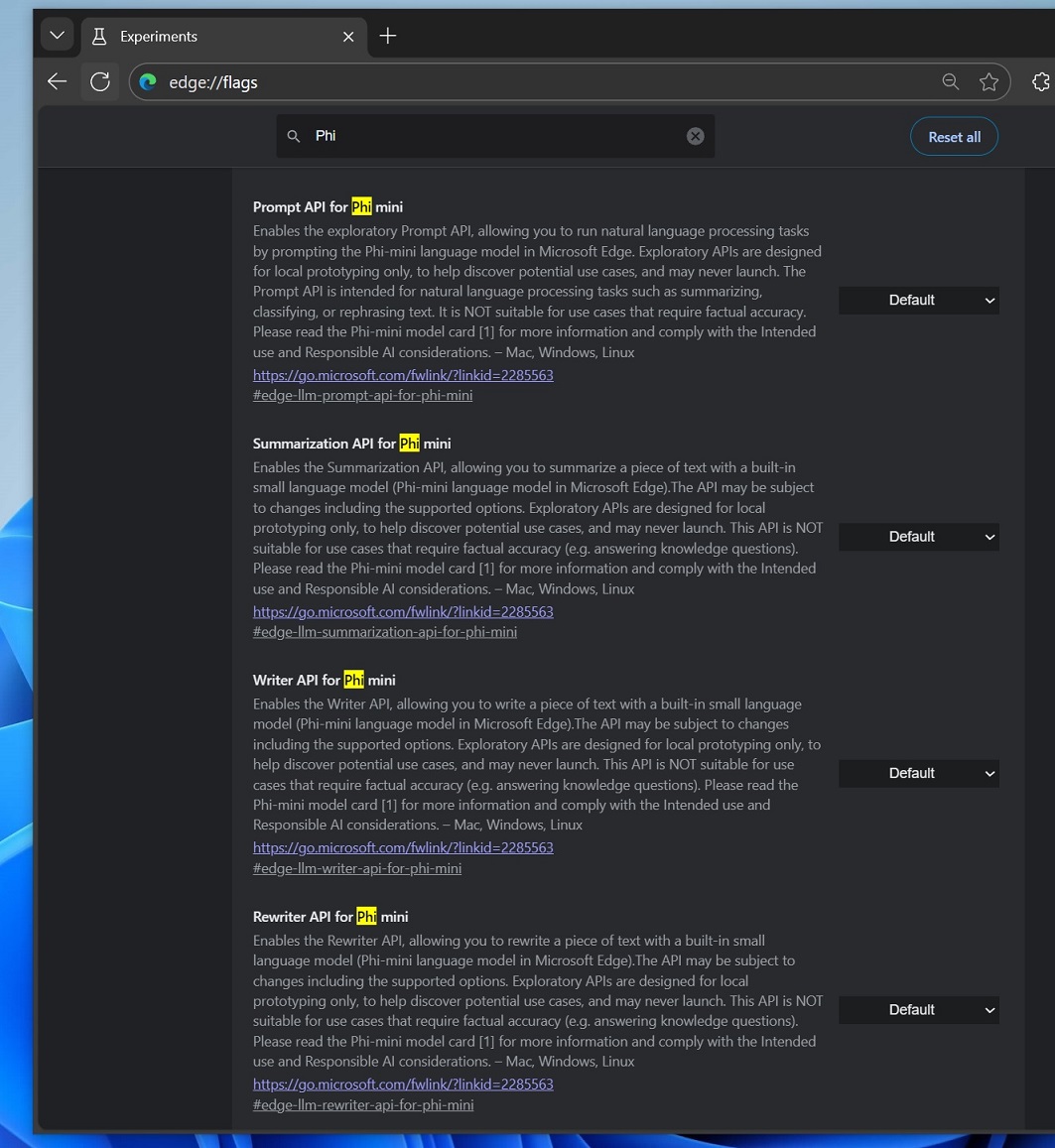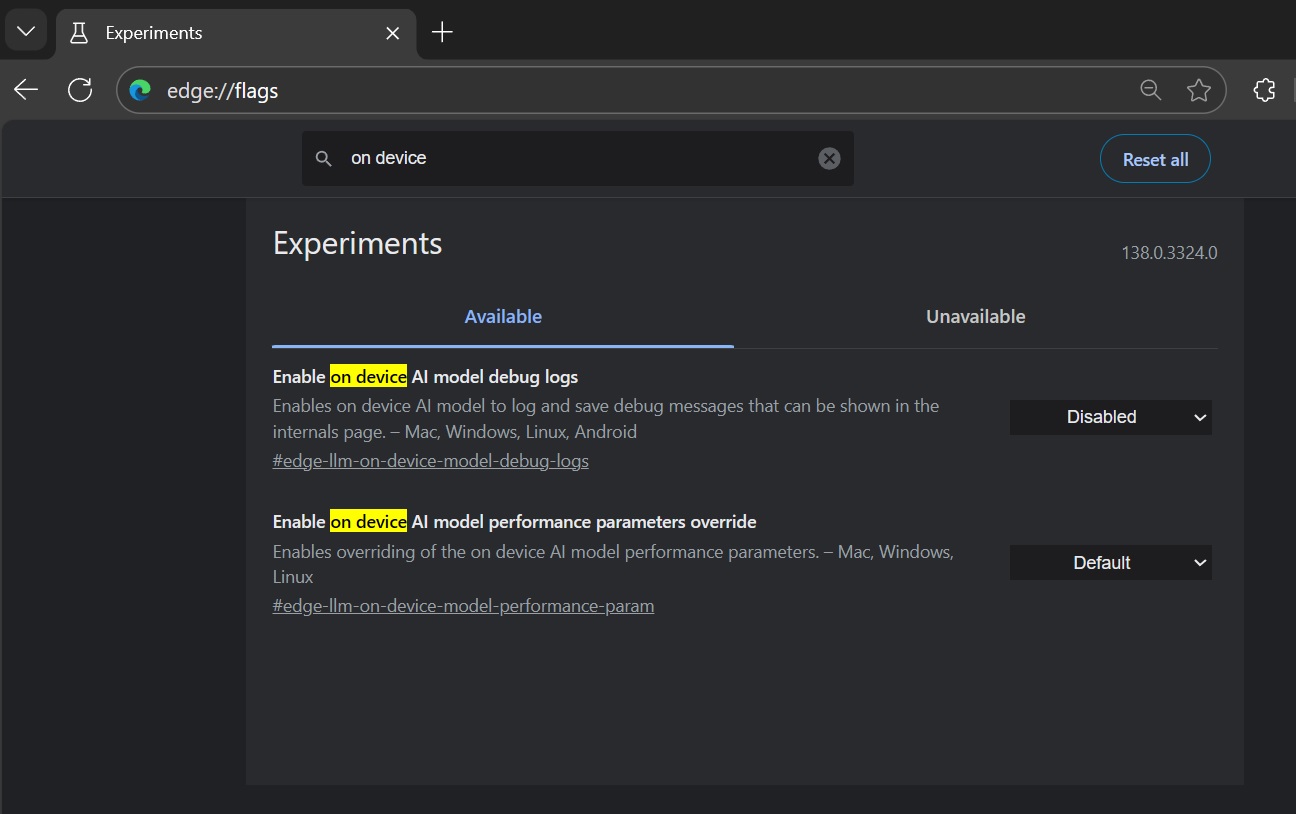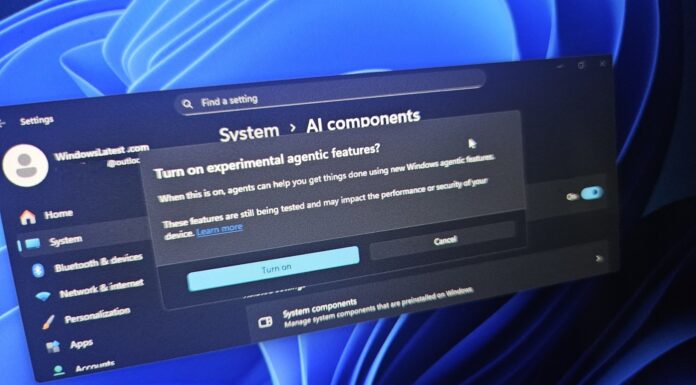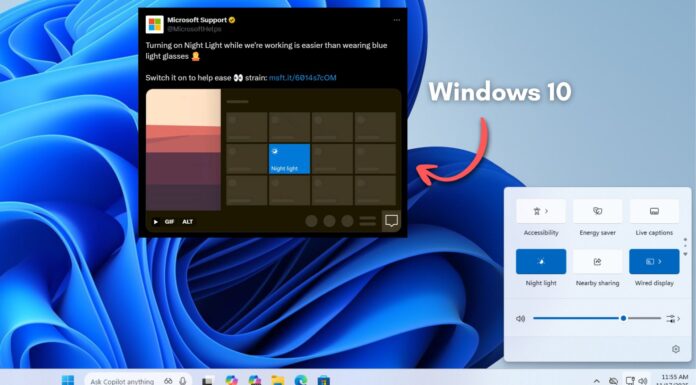Microsoft is looking to turn Chromium-based Edge into an AI-first browser on Windows 11, and we have reasons to believe that. Back in 2024, Windows Latest reported that Edge might use Phi-3 for some of its AI-based features, but instead of relying on the cloud, it may use native hardware capabilities.
As pointed out by Leo on X, there are several new “Phi mini” related flags already present in Edge Canary 138.0.3323.0 or newer.
One of the flags is called “Prompt API for Phi mini”, which allows you to run LLM tasks by triggering the Phi-mini language model in Microsoft Edge, but the company warns that it’s an “exploratory prompt API.”
What is Exploratory Prompt API?
For those unaware, Phi-4 is a small language model, which is different from ChatGPT (a large language model). A small model requires less compute, is efficient, and decent for reasoning or even complex tasks. As per Microsoft, Phi-4 has 3.8 billion parameters and is really good at text generation.
It also means Phi-4 is much cheaper than integrating something like ChatGPT into the Edge browser.
As a result, it makes sense to use Phi-4, particularly the Phi-4-mini model, in Microsoft Edge.
Previously, the company experimented with Phi-3, but it has decided to use the newer Phi-4, as the flags in the browser point to the Phi-4 model page:

As Microsoft describes, the Prompt API in Edge could process tasks such as “summarizing, classifying, or rephrasing text” natively in the browser. But Microsoft warns the current prototype isn’t designed to fact-check pieces.
There are also several other APIs for Phi-4-mini in Edge for Windows 11, including:
- Summarization API for Phi mini, which allows you to summarize a piece of text with a built-in small language model.
- Writer API for Phi mini, which allows you to write a piece of text with a built-in small language model.
- Rewriter API for Phi mini, allowing you to rewrite a piece of text with a built-in small language model.
Right now, Edge does have a “Rewrite with Copilot” feature, which achieves the same goal, but it’s tied to the cloud.
The Phi-4 integration means Edge would rely on the hardware capabilities to process some AI tasks, but we don’t know if this will be limited to PCs with NPU or if any GPU hardware would do the job.

In addition to the above references, there are two additional flags, one is titled “Enable on device AI model performance parameters override,” which bypasses all performance requirements, and then there’s a flag to debug logs when AI is being used natively.
This confirms that “on-device” AI is being considered for Microsoft Edge.
We don’t know if and when Microsoft plans to announce “on device” AI implementation for Edge, but the company is still trying to optimise Phi-4-mini or other models for the browser.
This may never ship like many of the other experiments.

























